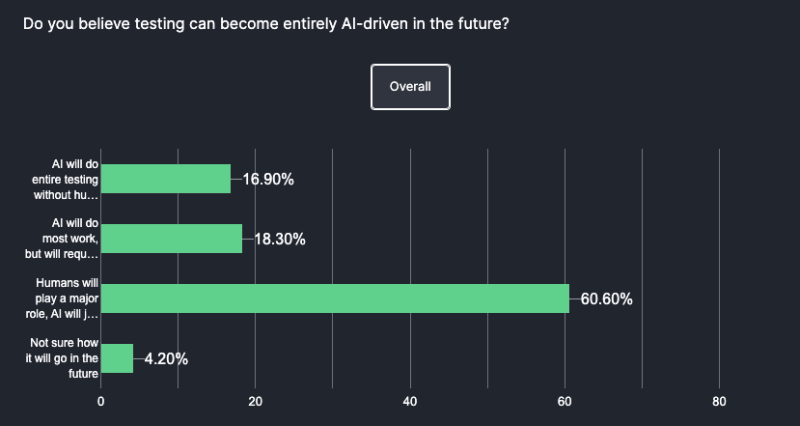Supercharge your developer community with limited resources! This guide unlocks the secrets to boosting engagement, scaling support with AI, and creating content that resonates with developers.
Introduction: Why Developers Are Your Startup’s Secret Weapon
Imagine a world where your product not only solves problems but has a legion of passionate fans who spread the word, provide valuable feedback and even help each other out. That’s the power of a thriving developer community.
In today’s software-driven world, developers are like gold dust for startups. They’re not just users; they’re the architects who build the future. When developers love your product, they become your most loyal customers, your best advocates and a source of invaluable insights.
But here’s the catch: building a community takes time, resources, and expertise – things that most startups are short on. So, how do you cultivate a thriving developer community when you’re juggling a million other things?
That’s where this guide comes in. We’ll walk you through a step-by-step process to engage developers, even with limited resources, and turn your community into a growth engine for your business. We’ll cover everything from building a strong foundation to scaling support with AI, creating content that resonates, and measuring your success.
By the end of this guide, you’ll have a clear roadmap to turn your developer community into a powerhouse of innovation and growth. So, let’s dive in!
Building a Strong Foundation
Think of your developer community as a house. Before you start decorating, you need a solid foundation. Here’s how to build yours:
Choose the Right Platforms: Where do your target developers hang out? Slack? Discord? A dedicated forum like Discourse? Pick a platform (or two) that’s easy to use, has the features you need, and fits your budget.
Set the Tone: Create a welcoming and inclusive environment where everyone feels safe to ask questions, share ideas, and get help.
Provide Essential Resources:
Documentation: Make sure your docs are clear, concise and up to
date. Include examples, tutorials, and
troubleshooting guides.
FAQs: Answer common questions upfront to reduce support
requests.
Quick Start Guides: Help new users get up and running quickly
with easy-to-follow instructions.
Tip: Use a tool like Doc-E.ai to automatically generate FAQs and documentation from your community interactions. It’s a huge time-saver!
Establish Clear Communication Channels:
Dedicated Support Channels: Make it easy for developers to get help when they need it.
Regular Updates: Keep your community informed about new features, bug fixes, and upcoming events.
Feedback Loops: Encourage feedback and suggestions and show that you’re listening by responding promptly and taking action.
Scaling Support with Limited Resources
As your community grows, answering every question personally becomes impossible. Here’s how to scale support without breaking the bank:
AI-Powered Chatbots: Doc-E.ai’s chatbot can instantly answer common questions, freeing up your team for more complex issues. Plus, it learns from your community’s conversations, getting smarter over time.
Self-Service Resources: Empower developers to find answers on their own with a robust knowledge base. Use Doc-E.ai to create articles from existing conversations, keeping your knowledge base up to date.
Peer-to-Peer Support: Encourage experienced community members to help out newcomers. This fosters a collaborative environment and reduces your team’s workload.
Prioritize High-Impact Interactions: Focus your team’s efforts on building relationships with key influencers, addressing complex problems, and proactively identifying potential advocates.
Creating Content That Resonates
Content is the fuel that keeps your community engaged. But creating high-quality technical content can be a major challenge for small teams. Here’s how to get more done with less:
Repurpose Existing Knowledge: Turn those support conversations into blog posts, FAQs, or tutorials. Doc-E.ai can help you automate this process.
Focus on Quality Over Quantity: Don’t churn out fluff. Instead, focus on creating in-depth content that addresses specific developer pain points.
Tap into User-Generated Content: Encourage your community members to create tutorials, blog posts, or code examples.
Listen to Your Community: Use surveys and polls to gather feedback on what kind of content your developers want.
Tip: Doc-E.ai can analyze community discussions to identify hot topics and suggest content ideas. It’s like having a built-in content strategy advisor!
Measuring Success and Iterating
Data is your compass. Track these key metrics to gauge how well your developer engagement strategy is working:
Active Users: How many developers are regularly participating in your community?
New Members: How quickly is your community growing?
Content Engagement: How much are people reading, sharing, and commenting on your content?
Support Metrics: How quickly are you resolving support requests? Is your customer satisfaction improving?
Adoption Rate: How many developers are actually using your product?
Tip: Doc-E.ai can help you track these metrics and surface insights to help you refine your strategy.












